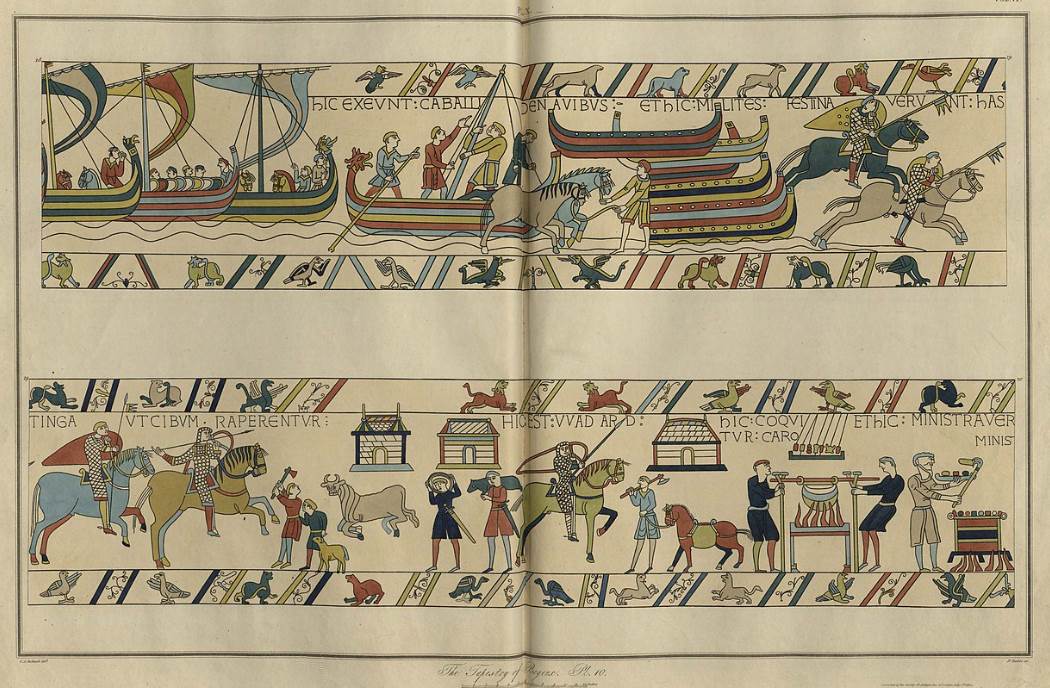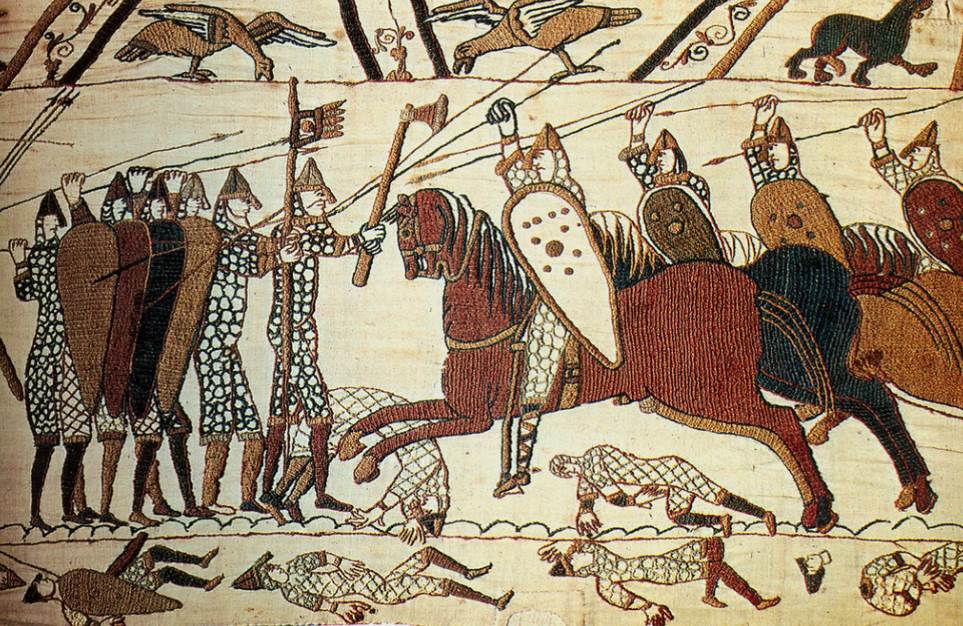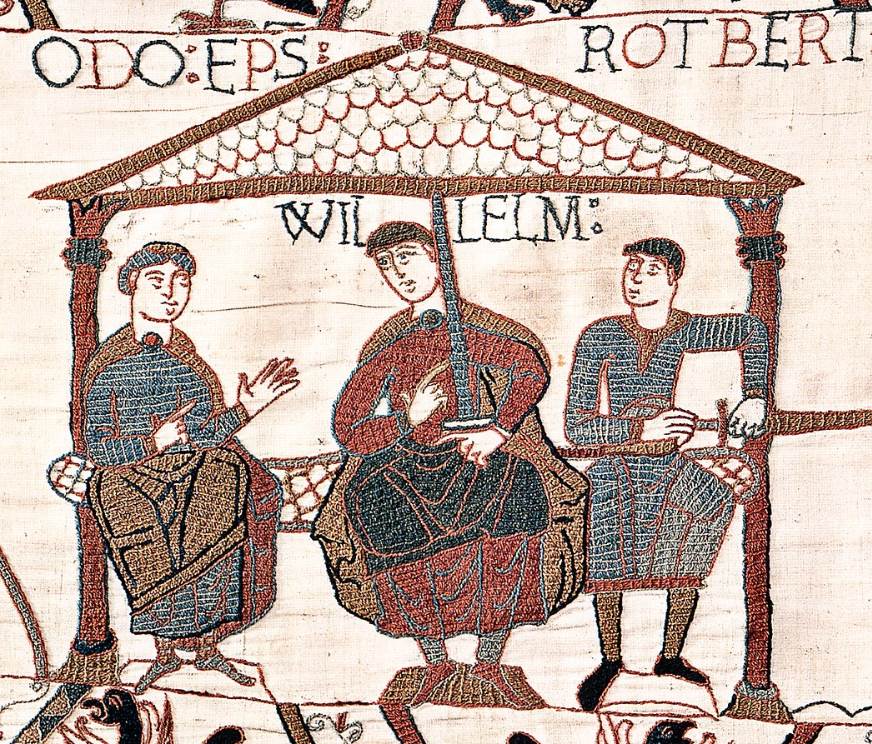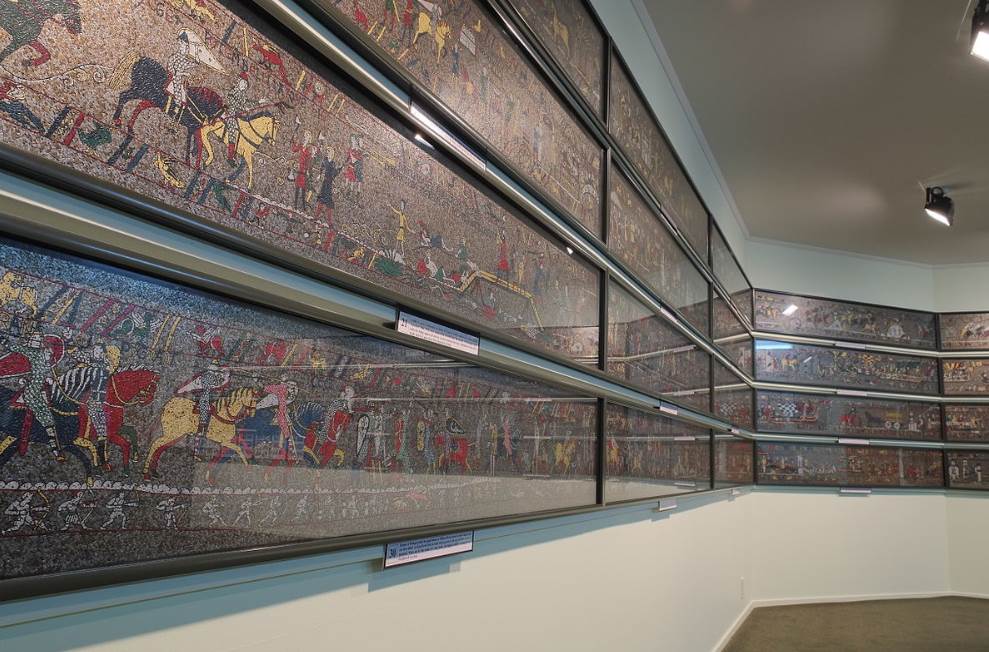There’s a cloud of mystery that surrounds one of the most amazing Romanesque artworks ever produced.
Despite the fact that this incredible tapestry is virtually intact, we still know very little about the exact details of its creation.
Let’s take a closer look at some of the most interesting facts about the Bayeux Tapestry, one of the world’s treasures with some interesting stories to tell.
1. It was probably completed shortly after the Norman Conquest of England
The Bayeux Tapestry is an embroidered cloth and one of the most fascinating artworks produced during the Romanesque era.
What’s fascinating about this immense tapestry is that we don’t know exactly when it was produced, or who worked on it.
The general agreement among historians is that it was probably created in England, shortly after the Norman Conquest of England in 1066.

The word tapestry is not an accurate description of this artwork. The more accurate word is “Embroidery” because the design isn’t woven into the cloth but added with a needle.
What is clear, however, is the fact that the Bayeux Tapestry depicts scenes related to the Norman Conquest of England.
More specifically, we can see the events that led up to the invasion, starting with the final Anglo-Saxon King Harold being sent o Normandy by Edward the Confessor.
A dispute between Harold and William, Duke of Normandy, culminated in the invasion and eventual Battle of Hastings, the final episode of the tapestry.
This battle was fought on October 14, 1066, and was the ultimate showdown between the Norman Invaders and King Harold Godwinson.
The latter was killed in battle and William continued his conquest of England afterward by building a vast number of castles in England to secure his power.

3. It has remained intact after nearly 1,000 years and is of monumental dimensions
One of the most amazing facts about the Bayeux Tapestry is that it’s virtually exactly the same as it was when it was completed almost 1,000 years ago!
Considering that it has a length of 68.38 meters (224 feet 4 inches) and a height of 0.5 meters (1 foot 8 inches), this is quite exceptional.
The tapestry consists of colored woolen yarns that were embroidered onto a plain linen background. The details and amazing craftmanship make it the epitome of Romanesque art.

4. The tapestry is divided into 58 scenes although this is not exactly clear
The official number of scenes that are depicted in the tapestry is set at 58. These aren’t clearly marked so this number is up for debate with some sources suggesting that there are up to 70.
The figures represented in these scenes consist of 600 characters engaging in all sorts of activities, 500 animals excluding 200 horses, and 50 trees.
Because it was pretty much impossible to produce a piece of linen with this length, the tapestry consists of 9 different pieces of linen that were joined together.

5. It was probably commissioned by the half-brother of William the Conqueror
We don’t really know for sure who commissioned the tapestry, but most indications point to one person. It’s likely that it was Bishop Odo, the man who became the Earl of Kent following the Conquest.
He was also the maternal half-brother of William I and even the regent of England when William wasn’t around.
Odo is prominently displayed in several scenes and the same applies to three of his followers that have been identified in the Domesday Book, a work completed in 1086.
Although this theory is generally accepted, in France, the tapestry is often referred to as “La Tapisserie de la Reine Mathilde” or the “Tapestry of Queen Matilda.”
This is a reference to the assumption that Queen Matilda, William the Conqueror’s wife commissioned the tapestry.

6. The Bayeux tapestry only resurfaced at Bayeux Cathedral in 1476
Another important fact that points towards Bishop Odo as the man who commissioned it is the fact that it resurfaced at Bayeux Cathedral in 1476.
Odo was the man who constructed Bayeux Cathedral, an amazing Gothic church that was consecrated in 1077. This makes it possible that Odo commissioned the tapestry to decorate his church.
It is, however, generally agreed that the tapestry was manufactured in England and moved to France after it was completed.

7. It depicts scenes from a Norman viewpoint and probably served as an apologia
The story of the Conquest of England is being told from a Norman point of view. This doesn’t mean, however, that the Norman Invaders’ adversaries were belittled.
Harold appears to be a brave man who died during battle, and the soldiers are depicted similarly.
The Latin text describes William as “Dux” or “Duke” and Harold as “Rex” or “King.” The exact context of some scenes has been interpreted differently by French and English accounts.
The most important scene of all is the one depicting Harold swearing an Oath to William in Normandy. This oath was broken and resulted in the Norman invasion.
What was the oath about?
The likely story is that Harold promised the English succession to William, but he crowned himself as king shortly after.
Either way, this tapestry can be classified as an apologia, an attempt to justify the Norman Invasion from a Norman viewpoint.

8. Many replicas of the tapestry have been made around the world
The Bayeux Tapestry isn’t just one of the most famous Romanesque artworks ever produced, it can also be described as one of the world’s amazing treasures.
Many replicas have been made and can be found all around the world, including a full-size replica that was completed in 1886.
This immense work of art is on display at the Bayeux Tapestry Gallery of the Reading Museum in Reading, Berkshire, England.

9. The most stunning replica is located in New Zealand
A man named Michael Linton from Geraldine, New Zealand produced a half-sized replica of the tapestry, but he didn’t use any fabric at all.
He used 1.5 million pieces of spring steel to create a mosaic depicting the scenes of the Bayeux Tapestry.
He worked on it for 20 years between 1979 and 1999 and although it was on display in the past, it’s currently held in storage.

10. The original medieval tapestry is on display at a museum dedicated to it
So where can you find the original version of the Bayeux Tapestry? Where else than in Bayeux, a small town in the Normandy region of France, right?
The tapestry is so special that a museum was established specially dedicated to displaying this incredible work of medieval art.
You can take a closer look and learn all about it at the tapestry at the Musée de la Tapisserie de Bayeux.



